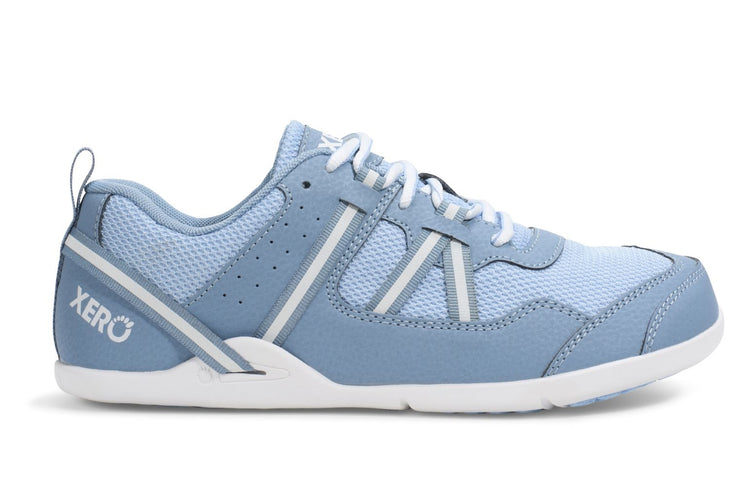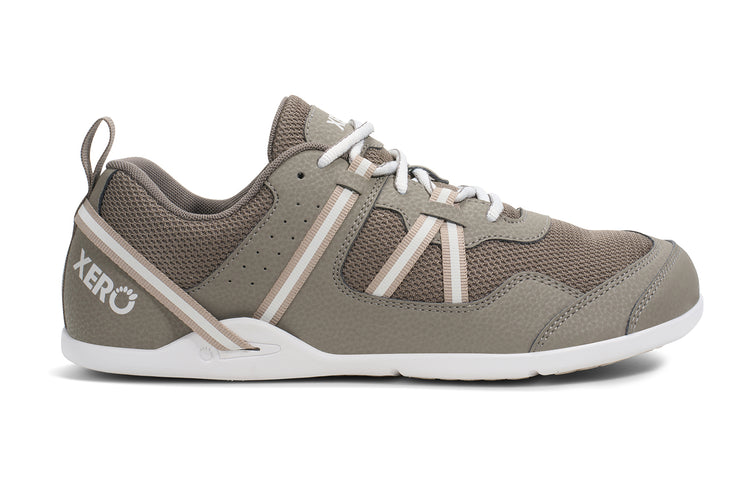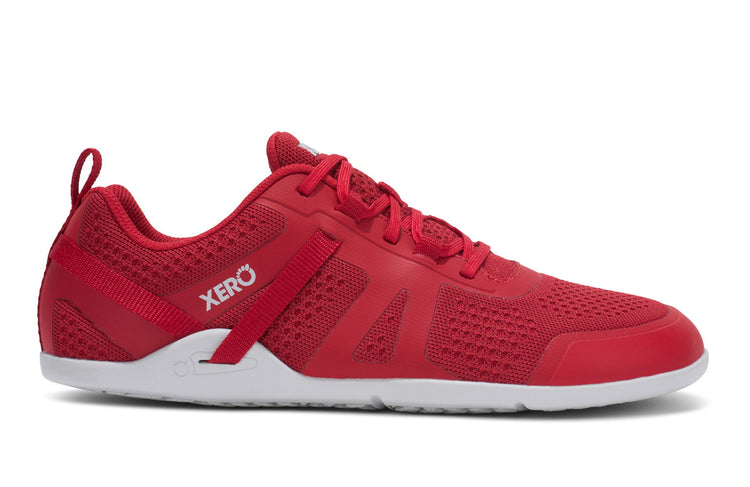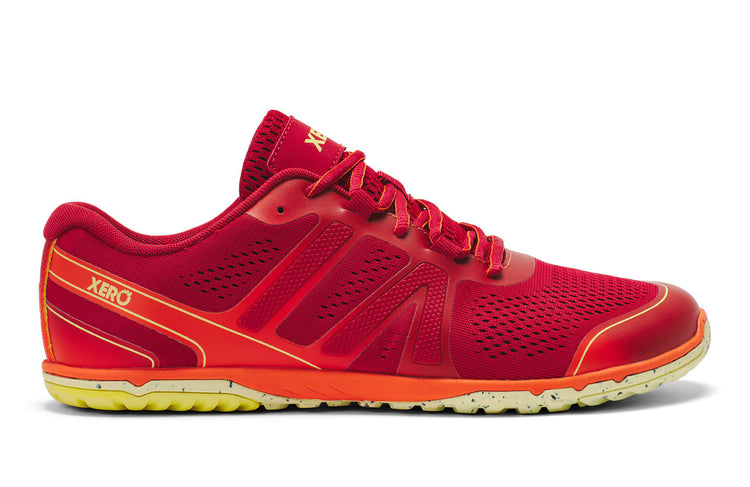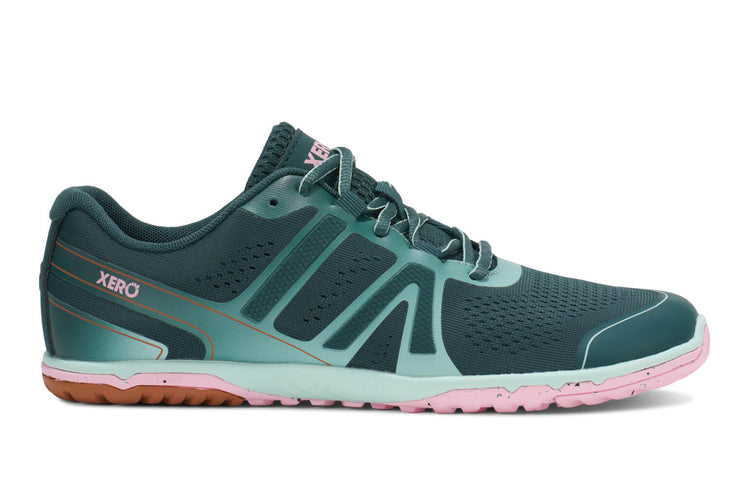latest News
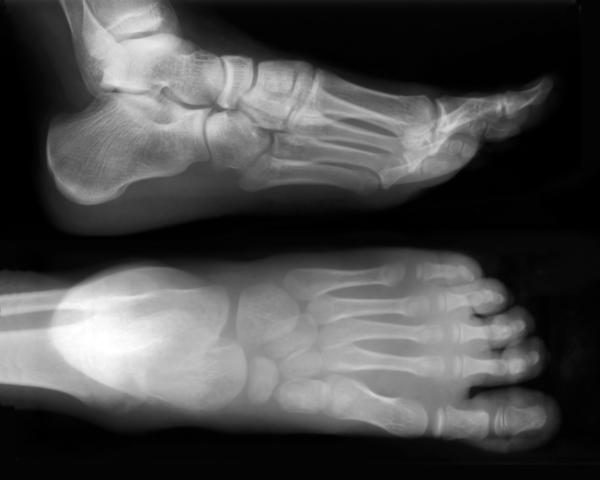
Will Vibram Five Fingers or Running Barefoot Injure You?
From the "Here we go again" department of the barefoot running world:About once every 2 months, some major news publication chimes in with one of these two stories: "Barefoot Running is GREAT for you" or "Barefoot running is BAD for you."The latest is of the latter variety and comes with headlines like this one from the New York Times: Barefoot Running Can Cause Injuries, Too, and Runner's World's "Study: Vibram FiveFingers Lead To Greater Risk of Foot Bone Injury.!What are these seemingly anti-barefoot articles talking about?A study done at Brigham Young University took 36 "experienced, recreational runners" and had 19 of them "gradually transition to Vibram FiveFinger running shoes over 10 weeks."After 10 weeks, 10 of the 19 had increases in "bone marrow edema."The researchers concluded that "Runners interested in transitioning to minimalist running shoes, such as Vibram FiveFingers should transition very slowly and gradually in order to avoid potential stress injury in the foot."Okay, let the picking apart begin.Before I criticize the study, let me criticize the hyperbolic reporting about the study.It's as if any time someone suggests that barefoot running might be bad for you (we'll come to whether the suggestion is valid in a moment), reporters jump on the story with a "Nah-nee nah-nee boo-boo, stick your head in doo-doo!" attitude.Look at the NYT headline. "Barefoot Running Can Cause Injuries, Too."Why is this over-the-top? Well, I hate to point out the obvious, but this study did not examine barefoot running. It looked at some runners in Vibram FiveFingers.VFFs are NOT barefoot. They may look like feet (gorilla feet, sure, but feet nonetheless), but the amount of padding and stiff rubber they have causes most runners to have a different gait pattern when they're in VFFs versus when they are barefoot. Simply, things that hurt when barefoot (e.g. over striding or landing too stiffly) are often unnoticed when in VFFs.The Runner's World headline, while accurate (it is reporting the conclusion of the researchers), it's a bit histrionic. That is, it almost implies agreement with the study. Had the reporter chosen to evaluate the study, rather than simply giving "just the facts, ma'am," or brought in an opinion from someone who evaluated the study, the headline might have been very different with a less anti-barefoot flavor.Now, don't get me wrong. Even though I'm a true believer in barefoot running (and walking and hiking and camping and kayaking and almost everything else), I'm also scientifically minded. If there were a good study that showed, "Barefoot running will erase photos from your hard drive!" I'd be the first to tell you to get a backup drive and buy some shoes.But this wasn't a good study.Let's break down the "barefoot" running study this way at first to see why:1) The researchers had the runners transition to VFFs by following a protocol from the Vibram website.2) A significant portion of those runners developed bone edema over 10 weeks.3) The researchers equated a certain amount of bone edema with injuryBased on this information, it's just as reasonable to conclude that the VFF transition program is the cause of injury, not the VFFs themselves.Next, if you poke around the podiatry and sports medicine world, you find another problem, namely, that there's a debate about the meaning of bone edema. Does bone edema = injury? The jury is out.So those two points alone should make you question what the study really shows.One thing we know it shows is that a majority of the VFF wearers got bone edema. And let's for now, assume that's the same as getting injured.In fact, let's dig a little deeper to find out that 2 of the VFF wearers got actual stress fractures -- definite injuries.Why did the runners get injured?Let's dig even deeper and look at those stress fractures.One was in the heel. How would you get that? Most likely by heel striking, a big no-no in the barefoot world and the common way to run in running shoes.The other was in the 2nd metatarsal? How would you get that? By landing hard on that bone behind your 2nd toe. And how does one do that? In my experience, by thinking "I'm supposed to land on the ball of my foot" and reaching out with your foot to do so. In other words, by over striding… the second big barefoot no-no.In other words, what this study may have really shown is that people who switch to VFFs who don't change their running form, or who change it incorrectly, get injured.But we have no way to know if that's what happened because the researchers didn't evaluate form. They didn't check to see if form changed over time.(BTW, the American Council on Exercise *did* look into that and found that most VFF runners do not change their form compared to how they ran in running shoes. Pete Larson took videos at the 2011 New York Barefoot Run and found the same thing -- most VFF runners were still heel striking as if they were in regular running shoes. Again, my explanation is that the VFFs don't give you enough feedback -- admittedly, discomfort -- to inspire the change.)The important barefoot running messageMost of us in the barefoot world like to say, "It's not the footwear, it's the form… it's just that some minimalist footwear helps you change your form better than others."What helps you change your form is feedback from the ground, the sensations you get when you run barefoot on a hard surface. In short, if it hurts, you'll try something different so that it doesn't, especially if you get a few tips about what to try (e.g. how to not overstride, how to not pull/push the ground, how to lift your feet off the ground rather than pushing).As far as getting sensations goes, barefoot is best. Xero Shoes are a close second (it's as if you're totally barefoot, but someone threw a thin layer of flexible rubber on the ground).Where are VFFs? Well, it depends on which ones you wear! Some have more padding (i.e. reduce ground feel) more than others. And in this study, we don't know which ones the runners were wearing.Let's back up a bit to another odd fact from the study. The shod runners averaged 30 miles/week, but the VFF runners averaged 15-18 miles/week. That's a BIG difference. And when you look at the transition plan, following the plan doesn't account for running half the mileage of your shoe wearing compatriots.Dr. Ridge guessed that the runners cut their mileage "because their feet hurt" but there's no indication that they ever reported pain, and since 9 out of 9 runners had no edema, they should have been still running their usual 30/week mileage, which would mean the 10 "injured" runners must have cut their mileage to about ZERO to get an average of 15-18.I suspect that the "random assignment" of people into the VFF group accidentally put the less skillful and accomplished runners into VFFs. I don't know for sure, because I don't see any stats on the pre-study mileage of each runner compared to the in-study mileage, let alone how the mileage changed for the "bone edema runners" vs. the "non-edema runners."Finally, let's look at the conclusion the researchers came to:Runners interested in transitioning to barefoot running shoes, such as Vibram FiveFingers should transition very slowly and gradually in order to avoid potential stress injury in the foot.Uh… how did they come to that conclusion?They didn't compare runners who transitioned in 4 weeks, 8 weeks, 10 weeks, or 10 years. For all we know, transitioning more slowly could be WORSE for you. Their suggestion might be as useless as, "If you want to avoid the frustration of learning Spanish, transition slowly and learn one new word per week."In other words, they have no basis to make that conclusion.The transition to barefoot running that I recommend starts with MUCH less distance than the VFF plan… but with more frequency (a little bit, more often). And it increases distance and frequency based on your unique experience, not some arbitrary schedule.Once again, I'm left with the hope for more, and more nuanced and well-designed, barefoot running studies. And, even more, for more and more nuanced reporting about barefoot running (or, in this case, minimalist running).The content of this post does not constitute and is not intended to be a substitute for professional medical advice, diagnosis or treatment. Always seek the advice of a physician or other qualified health provider with any questions or concerns you may have about your health or a medical condition.
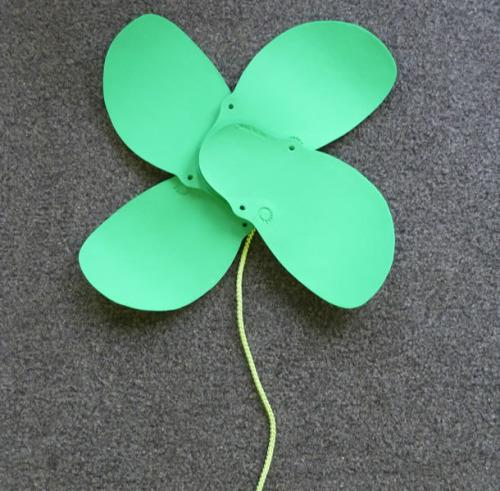
Happy, and barefoot, St. Patrick's day!
Happy St. Patrick's Day from Xero Shoes! I don't know about you, but I'd love to find this barefoot sandal 4-leaf clover in my garden. I'm sure it would make you lucky if you found it;-) Since moving to Boulder, CO almost 20 years ago, I love St. Patrick's day, not just because of the world's shortest St. Patrick's Day Parade (1/2 a block), but because by this time of year it's usually warm enough to be barefoot again. Now, granted, I'm barefoot throughout the whole winter, too. So it's not like anything is actually changing for me. Plus, we usually get our biggest snowfall of the year AFTER mid-March, so it's not time to put away the shovels. But I'm not a winter sport guy. Summer is my season. There are fewer things I like better than a nice day running on the track, or one of our evening track meets when it's still warm as the sun sets. So, for me, St. Patrick's is is the reminder that I've got month's of comfortable bare footedness coming up soon. I also have a lot of friends who have birthdays right around the 17th, so that's fun, too. What's your favorite part of St. Patrick's day, barefoot or not?
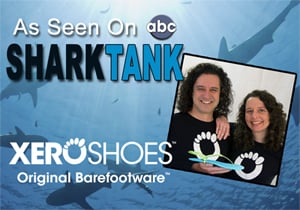
We were on Shark Tank!
Did you see us on ABC's Shark Tank? (if not, click here) Want to try a pair of Xero Shoes • Original Barefootware and have the fun and benefits of being barefoot... plus: The protection you want A perfect fit (you can trim them to size if you like) Style that expresses your personality (with fun lacing or decorative add ons) An affordable price Complete natural movement Our 5,000 mile warranty As of March 2020: Over 650,000 items sold in more than 130 countries, all for people who love Xero Shoes for: Walking Hiking Camping Paddle boarding Yoga Crossfit Kayaking Working out Jogging Running 100-mile ultramarathons! ... and having fun! Our DIY barefoot sandal kits are the perfect project for the family... you can make your own shoes in just a few minutes. Or you can let us do the work with our ready-made shoes and sandals. Not sure what to get, or ordering for a friend or family member? Get a gift certificate instead.
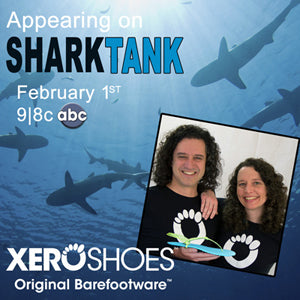
Xero Shoes on ABC's Shark Tank on Feb 1st!
For all of you who, for the last 3 years, have said to us, "You guys should be on Shark Tank!": You can stop saying it now You'll appreciate how good of a secret we've kept ;-) While Lena and I were taking our first vacation since starting our company, we got an email saying that we're scheduled to appear on Shark Tank on Friday, February 1st. The show is on ABC and airs at 9pm Eastern and Pacific, 8pm Central and Mountain time.For those who don't know the show, check out ABC.com. For those of you who know Dragon's Den from the U.K. and Canada... same idea (in fact, 2 of the same Sharks).In essence, Lena and I will be pitching 5 investors -- the Sharks -- to get an investment in our company and take it to the next level.We couldn't be more excited than to see what happens when we air, and when over 7 MILLION people discover our barefoot sandal company.BTW, we appear as Xero Shoes on the show and, if all goes well, we'll be using our new site at www.XeroShoes.com starting next week!Fingers crossed!
Is there a best way to run?
The barefoot running boom has heated up a debate about the best way to run.Barefoot? Shoes? Barefoot shoes?Midfoot strike, heel strike, forefoot strike?In today's New York Times Online, Gina Kolata (whose writing and name I adore) goes after this question.Really, you can stop reading after the first sentence of the 2nd paragraph... and since that's the most important sentence, I'll just quote it here:Most of the scientific research is just inadequate to answer these questionsThe reasons that the research is inadequate are two-fold: Not enough research to explore the various aspects of the question Poorly designed research I can't say much about #1 other than to hope that more research is done. But if more research is done poorly, then what's the point.So what makes some of the running research, especially the studies that examine barefoot running, so poor? A number of factors: Bad cohort (the people in the study). Many of the studies solicit "barefoot runners" who've never actually run with bare feet. They may have spent some time in Vibram Fivefingers or, worse, in Nike Free... but wearing those is not the same as being barefoot (as many readers of this blog can attest). Many of the studies have too few runners. Many of the studies have runners that are, say, between the ages of 18-22 and on the college cross-country team (they're not typical runners). And if the number of runners in the test is small enough, it may be hard to extrapolate from their results. Missing factors. Many of the studies will look at one aspect of gait and ignore many others, and then try to conclude something about running mechanics. Rodger Kram's recent study on cushioning, for example, doesn't look at foot placement (overstriding or not), doesn't consider weight (which can effect the value of cushioning), type of cushioning, etc. I'm not saying that it's even possible to design a study that accounts for all these factors, but when you isolate things too much, it's hard to draw a useful conclusion... though everyone around you will draw it and then fight to the death defending or attacking it. Arbitrary variables. Many studies are done with runners on treadmills running at a fixed pace. The obvious question: is running on a treadmill identical to running on a track? Not in my experience. Also, is, say, 5 minute/mile pace my usual pace? We know that if you increase your cadence without increasing your speed, you can reduce force on your body and decrease the amount of time you spend on the ground... so by controlling one variable, you could be affecting the results of the study. Suffice it to say, I'm always glad when the media talk about running, and barefoot running in particular. But I find it unsatisfying when they merely regurgitate the "results" of a study without telling the reader whether the study is worth considering in the first place.Then there's the straw man problem, which is when you make up a person (complete with opinions) and then argue with that fictional person. There's a lot of that going on. Many barefoot writers (including myself, Pete Larson, Bill Katovsky, Mark Cucuzzella) have noticed that individual differences may be more important than "one right way" to do things, and that it's hard to get useful data by looking at genetic freaks (like Olympians). Yet the media loves to present these studies, and studies of studies, as if there's no reasonable thinking on either side of the fence. Not true.Again, as the article said up top: Most of the scientific research is just inadequate to answer these questions. Let's hope that changes.The content of this post does not constitute and is not intended to be a substitute for professional medical advice, diagnosis or treatment. Always seek the advice of a physician or other qualified health provider with any questions or concerns you may have about your health or a medical condition.
Barefoot Running - The Movie!
Our friends Michael Sandler and Jessica Lee have just released an incredibly ambitious project:Barefoot Running - The MovieShot in Hawaii, the footage is STUNNING (it'll make you want to run, run barefoot, run barefoot in Hawaii, or just move to Hawaii). I'm telling you, some of the shots in this movie make it feel like you ARE running around Hawaii, which as the Fall descends on Colorado, is quite a pleasant feeling.And it's practically everything Michael and Jessie know, and have been teaching, about barefoot running for the last 3+ years. I say "practically" because the section of footwear is notoriously lacking in a mention of us ;-) (or of huaraches, in general).I asked Michael about this. He said, "When we got to that section of the video, it was just me and the director and one camera... and we didn't have any of our sample footwear -- including Xero Shoes -- on the island. And we had just a few hours to get that section done!"Apology accepted ;-)He did, though, let me know that huaraches are featured in their upcoming book, Barefoot Walking (due out early 2013).BTW, if you don't know, Michael and Jessie were my introduction to running without shoes... and Michael's comment that if I built a website for what was at the time a sandal-making hobby he would include us in his upcoming book... well, that was the beginning of Xero Shoes.Congrats on an impressive and heartfelt project, M & J... and thanks for inspiring what has become the most satisfying business I can imagine.
See, Barefoot Running is NOT Bad for You
The media is an interesting thing. One day, they love you, the next day they hate you. As long as there's controversy, they're interested... ish. The last time barefoot running made all the news it was when the University of Colorado study (done right up the hill from me) apparently showed that barefoot running was less efficient than running in shoes (see my analysis of that study here). In fact, when that study got published, the media went crazy, practically insisting that this was the death knell for those of us who run unshod. So, I'm not sure what it means that they've basically ignored a new study from Northumbria University that shows the exact opposite! Why are there no crazed headlines about how running without shoes really IS the greatest thing since bread, the slicer, and the sliced bread that comes from intelligently combining the two? Who knows. Who cares. More importantly, check out the info about the study here at ScienceDaily.com In short, if you want the synopsis: Runners used 6% more energy when they wore shoes. Here's the line I like: The results suggest that, by ditching their trainers, athletes new to barefoot running adopt a running style similar to experienced barefoot runners and enjoy an immediate and likely beneficial increase in running economy. Works for me (in fact it DID work for me!)
Barefoot Running... The Movie!
I know many of you are eagerly waiting for the Born To Run movie (I am, too).Well, until that's out at your local gajillion-plex, check out this trailer of the new barefoot running movie by Michael Sandler and Jessie Lee, authors of Barefoot Running.I'm forever grateful to Michael and Jessie... when I decided to try running barefoot as a way to deal with my persistent running injuries, I was fortunate enough that they were teaching a workshop that very weekend, right in my backyard (metaphorically speaking... it was 3 miles away).Even more, after my first barefoot run, when I said to Michael, "Well, that was interesting, but I'm a sprinter, not a long, slow distance guy," he encouraged me to try it a few more times and, for some reason, I did.Then, Jessie, being a former sprinter herself, added a whole other level of fun when we would take off across some field, leaving the LSD runners in the dust ;-)Oh, and it was Michael saying, "If you had a website for these sandals you're making, I'd put you in our new book," that was the beginning of Xero Shoes!If you watch this trailer and don't want to book a ticket for the workshop where Michael and Jessie take you to all of these amazing locations, then there's something wrong with you (or you already live in Hawaii).I've seen clips from the entire movie and it's really something special. Enjoy.
Run in Peace, Micah True
There's no way to adequately thank one of the great inspirations in the running world, Micah True, also known as Caballo Blanco ("White Horse"), who was found dead just hours ago. Micah, arguably the "star" of Christopher McDougall's best seller, Born To Run, went out for a run on Tuesday and did not return. There's no news at this moment about a cause of death.As Micah would often say in signing off, "Run Free!"Run In Peace, Micah.
Dr. Mark's brilliant Natural Running video
Dr. Mark Cucuzzella is not only FAST (he won the US Air Force Marathon this year), he's committed to understanding the facts of barefoot running (and minimalist, too).As a physician, professor, and owner of Two Rivers Treads running shoe store, Mark is all about getting people running safely, enjoyably, and easily. Plus, he's a really nice guy.Mark just released an incredible video about "Natural Running." His emphasis in the video is about running barefoot, but his point is that if you run with a natural gait, you may be fine in a minimialist running shoe, too.Check out this video and let me know what you think.One of my favorite parts is simply seeing mark run... FAST. There are so many critics who say "You never see barefoot runners who have any speed" (forgetting, of course, Abebe Bikila, Zola Budd, Ron Hill, and many other fast, barefoot Olympians).I also like how Mark doesn't emphasize exactly how your foot is supposed to hit the ground other than "don't heel strike." A number of us, including Mark and Pete Larson (of www.runblogger.com) have been saying, "There will be individual differences in how you land on your foot -- from flat-footed, to fore-foot -- that will depend on your physiology and biomechanics as well as how fast you're running and whether you're running uphill, downhill, and even on the surface."That said, most new runners may want to focus on a forefoot strike at first, if for no other reason than many of us have lost our proprioceptive skills from years of wearing shoes and may think we're mid- or fore-foot landing when we're still heel striking. I've had more than my share of runners try to convince me that their heels never touched the ground, even when looking at video showing them clearly heel striking.Thanks to Mark for this great addition to the world of barefoot and natural running.The content of this post does not constitute and is not intended to be a substitute for professional medical advice, diagnosis or treatment. Always seek the advice of a physician or other qualified health provider with any questions or concerns you may have about your health or a medical condition.
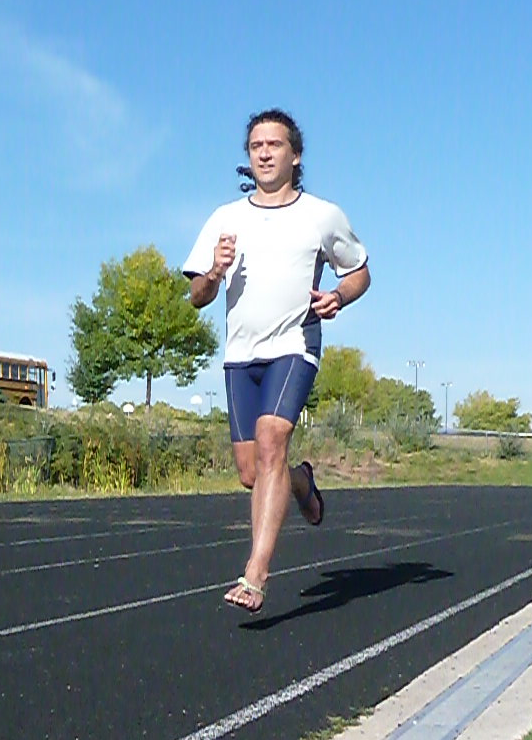
How To Run Barefoot
How to Run Barefoot: Techniques to Get Started “How do I start barefoot running?” “What’s the best book/course/coach for learning to run barefoot?” “Can you show me what the best barefoot running form looks like?” I get these questions a lot. And it’s a bit tricky to answer them for a few reasons: Frankly, if all you did was take off your shoes, go for a run, stop when it hurts, and experiment to find ways of running that feel light, easy and fun (which is the way running with natural form should feel), you would learn more than I, or anyone else, could tell you. Those of us who’ve observed barefoot runners and coached barefoot running are starting to notice the obvious: different runners have slightly different form. That is, when you look at the BEST runners, they have many things in common, but they’re not all doing the exact same thing. So, I don’t want to say something that isn’t going to be relevant for YOU. To be totally candid, I’m in an awkward political situation — as a guy who sells “barefoot-style” footwear, and who would like to have ALL the coaches referring their clients to me, I can’t single out one coach/book/technique over another (or one “under” another, either). I can tell you that if you listen to ALL of them, and then follow a bit of advice I’ll give, below, you’ll appreciate each coach for his/her unique contribution to your barefoot running form. Many runners aren’t aware of what their bodies are actually doing, so certain recommendations won’t be effective anyway. If I say to you, “don’t land on your heels,” and show you a video of how you’re “supposed” to land on your foot, you may be 100% convinced that you’re doing what I suggested, and then a video might show that you are totally heel-striking. In other words, what I say will be less important than what you learn on your own. However, what I CAN do is offer some thoughts about getting started with barefoot running. Tips on How to Run Barefoot Here are my best tips on how to get started running barefoot, refining your running technique, and enjoying the benefits and fun of barefoot running How to Getting Started Realize that the best coach you have is YOU and your sensations and whatever you can learn from watching video of yourself (especially slow motion video). In fact, you MUST become your own best coach, because no external coach will be there for every situation you’ll encounter as a runner. If you can’t listen to yourself, make adjustments in what you’re doing, and know when to STOP… no other coach will be helpful anyway. Start SLOWLY and build up. There’s no rush in making the transition to barefoot running. And there’s no way to predict how long it will take YOU. Run barefoot on a hard, smooth surface. These surfaces are best for learning because they give you the most feedback. Remember that barefoot running is a never-ending process. You can always improve. Refining Your Barefoot Running Form To be slightly more specific and technical, and tell you some of what you would discover on your own with enough time and attention: Aim for having your feet land “under your body” - more so than you’re probably used to. Landing with your foot out in front of you too much is “overstriding” and it’s one of the habits that most of us need to work to overcome. You may need to even exaggerate this to get the feel of it — put your feet “behind you” when you land. You won’t actually be able to do this, but if you try it will highlight what overstriding feels like… and the correct place to put your feet is probably somewhere in between. You want to land forefoot or midfoot. Do NOT reach out with your foot to do this; that’s the opposite of what you want to do. By the way, If you land with your foot underneath your body it's almost impossible not to land on your forefoot or midfoot. You don’t need to stay on the balls of your feet and put extra strain on your calves and Achilles tendons. Once you land on the ball/midfoot, you can let your heel drop if it feels better to do that, and it will feel better/worse depending on whether you’re going uphill or downhill or on a flat surface, and depending on what speed you’re running. Don’t PULL your foot toward you, or PUSH it behind you… that’ll cause blisters as well as put extra strain on your hamstrings (pulling) and calves (pushing). Think, instead, about PLACING your foot on the ground and LIFTING it off. And lift by using your hip flexor. That is, think about lifting your foot off the ground by lifting up your knee, not by pushing off the ground. Un-Plop your feet. This is hard to describe, but many of us slam our feet into the ground, or wait for the ground to hit our feet. We plop them onto the ground instead of meeting the ground lightly. There are a lot of “cues” coaches use to teach this: Pretend you’re running on hot coals, or on thin ice, or trying to sneak up on a deer, or that your feet are wheels and you want them to touch where the wheel meets the ground, or that the ground is moving below you like a treadmill and you want to move your feet at the same speed as the treadmill. You will need to find your own way to feel this. Keep your core tight… when you run, your body is a spring. If you collapse in your midsection, you’re weakening the spring and making it less efficient and, therefore, making it harder to run. Pick up your cadence. Most people think 180 steps-per-minute is some magic number. It’s not. Some successful runners do more, some do less. The point of moving your feet faster than you’re probably used to is that it gives you less time to keep your feet on the ground… and that’ll help you learn to place/lift, “un-plop” and not overstride. LISTEN to the sound your feet are making… if you’re running loudly, if you make a lot of noise when your feet hit the ground, you’re doing one of the above incorrectly. This is true if you’re barefoot, in our barefoot shoes, or any other footwear. You can run quietly (not silently), and quiet running is usually a sign of good form. WONDER! When I run, I keep a question in my mind, “How can I make this lighter, easier, and more fun… and, sometimes, faster?” Then, I experiment and see what I can find. Finally, and most importantly: REST. Bodies get stronger when you let them rest. There are no bonus points for not taking a day off. HAVE FUN! If it’s not fun, do something different. Try a different surface, a different speed, a different reason for running (compete if you haven’t before, do an obstacle course if you’re usually all about putting in mile after mile). I’m sure other barefoot runners have additional pointers. Can’t wait to hear them. Oh, and did I mention, barefoot running can be, should be, and IS (once you get it) FUN… don’t forget that! Want to learn more about learning how to barefoot running? Watch this video below The content of this post does not constitute and is not intended to be a substitute for professional medical advice, diagnosis or treatment. Always seek the advice of a physician or other qualified health provider with any questions or concerns you may have about your health or a medical condition.
Harvard Barefoot Running Studies Support Xero Shoes
What are the benefits of barefoot running? Well, Harvard's Dr. Daniel Lieberman has another answer. His studies from 2 years ago showed how barefoot runners who forefoot strike put less force into the ground and, therefore, less force into their joints. Now he has 2 new studies that have just come out that support how proper barefoot running form and minimalist running shoes can result in fewer injuries and more efficient running. "Foot Strike and Injury Rates in Endurance Runners: a retrospective study" looked at college cross-country runners and found that those who heel-strike (landing on their heels first) had approximately twice the rate of injury than those who forefoot strike. For those of you who've been exploring barefoot running know, proper barefoot form involves landing on the forefoot first. BTW, that doesn't mean you "run on your toes" -- your heel can naturally drop to the ground after the forefoot meets the ground first. In fact, letting your ankle relax is part of the natural spring mechanism of the leg. You may also know that the easiest way to help train yourself to forefoot strike is to go barefoot or wear something genuinely minimalist, like Xero Shoes. The more you can feel the ground when you run, the less you'll want to land on your heel... because IT HURTS! Be careful, though, many shoes that call themselves "minimalist" still have enough padding and protection between you and the ground that you lose the barefoot feel and can still heel strike. In fact a recent barefoot running study by ACE and some video of barefoot runners made by Pete Larson of runblogger.com showed that a majority of Vibram Fivefinger wearers still heel strike as they run. In my experience, this is probably because the VFFs have enough padding (especially the ones made for running, ironically) that the wearers can't tell they're still heel striking. Dr. Lieberman's other study, "Effects of Footwear and Strike Type on Running Economy" demonstrated that runners in minimal footwear have increased efficiency than those in traditional running shoes. Specifically, the study concluded that "Minimally shod runners are modestly but significantly more economical than traditionally shod runners regardless of strike type, after controlling for shoe mass and stride frequency. The likely cause of this difference is more elastic energy storage and release in the lower extremity during minimal shoe running." If minimal shoes make you more efficient, that's good news for us, since Xero Shoes are about the most minimalist running shoe you can find. :-)



